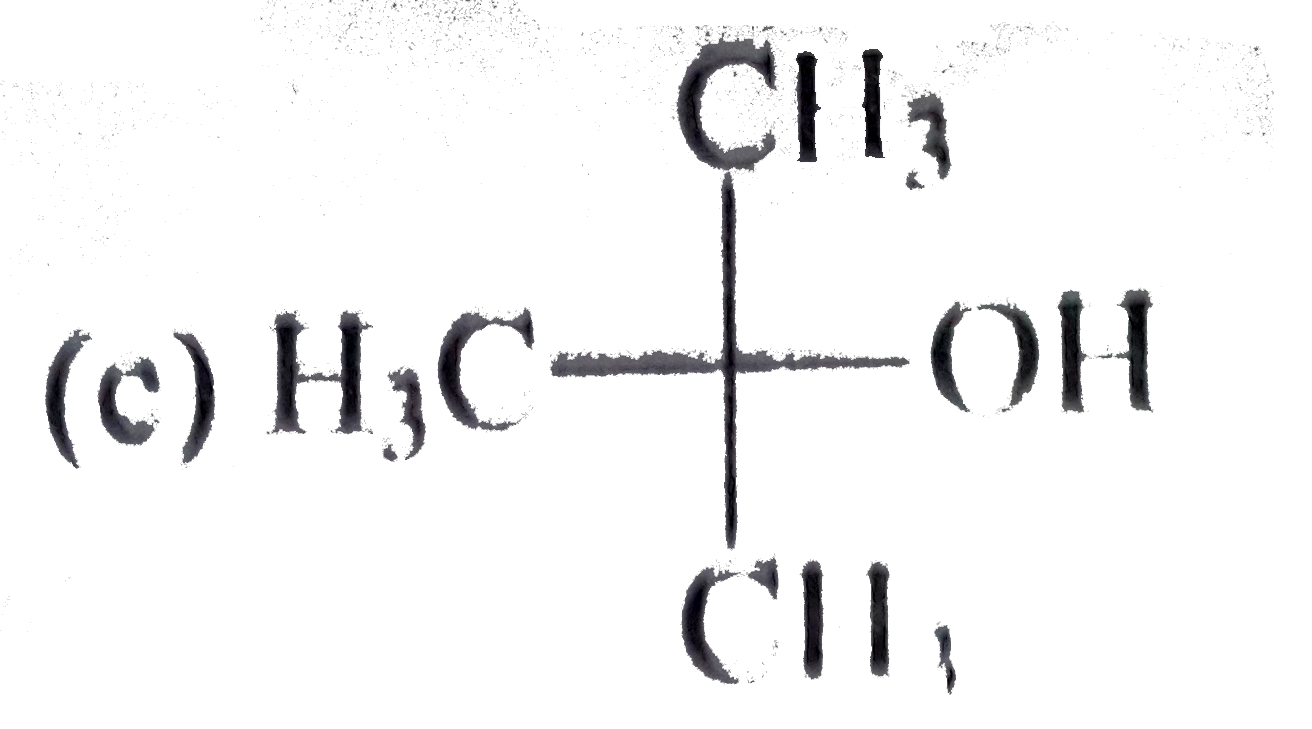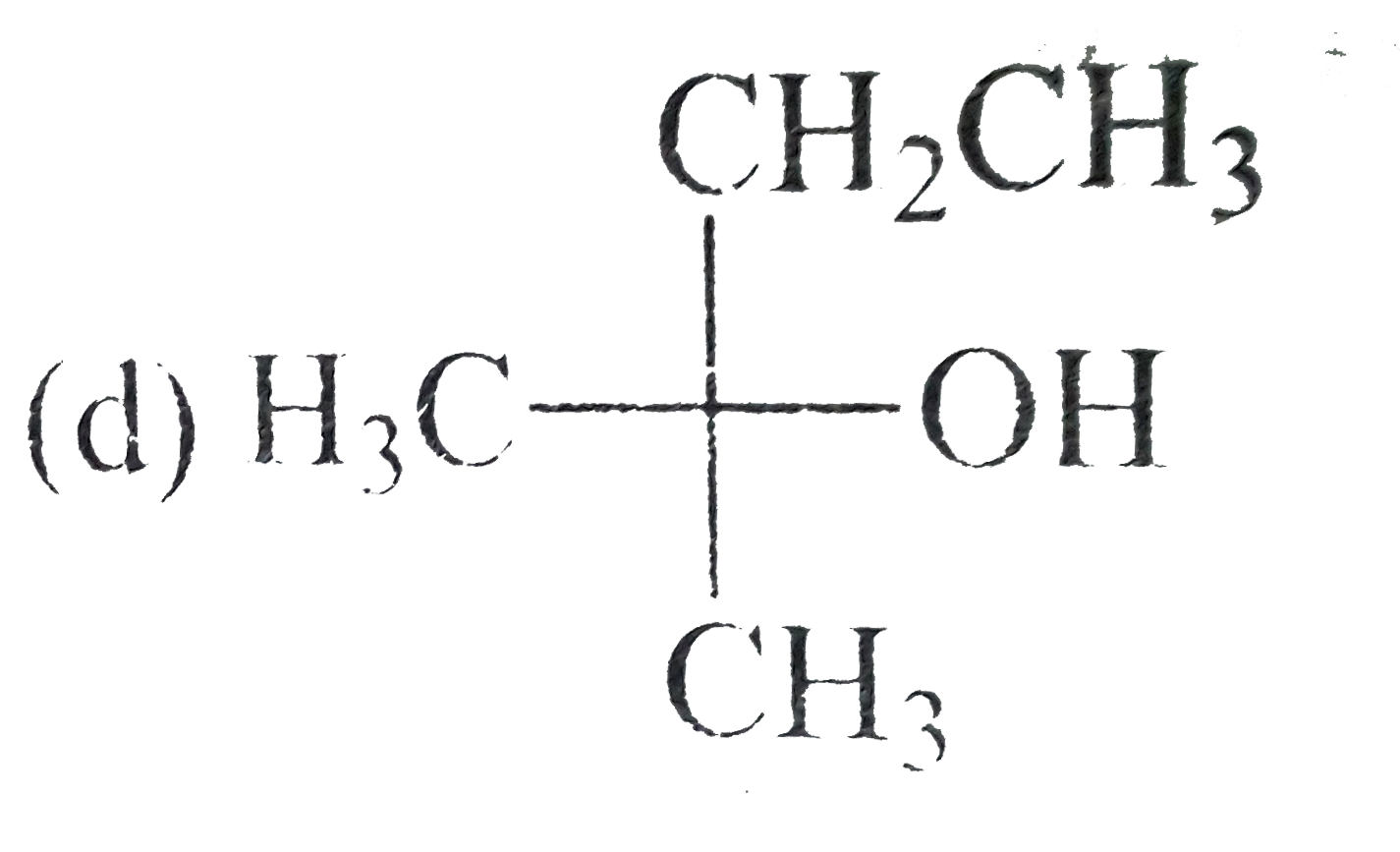A ketone reacted with ethyl magnesium bromide followed by hydrolysis gave a product which on dehydration gave an alkene. The alkene on ozonolysis gave diethyl ketone and acetaldehyde. The ketone is-
Dimethyl ketone
Ethyl methyl ketone
Diethyl ketone
Ethyl propyl ketone
The correct Answer is:C
To solve the problem step by step, we will analyze the reactions involving the ketone, ethyl magnesium bromide, hydrolysis, dehydration, and ozonolysis.
Step 1: Identify the Ketone
We need to find a ketone that, when reacted with ethyl magnesium bromide (C2H5MgBr), will produce a product that can undergo dehydration to give an alkene. The final alkene should yield diethyl ketone and acetaldehyde upon ozonolysis.
Step 2: Reaction with Ethyl Magnesium Bromide
Let's denote the ketone as RCOCH3 (where R is an ethyl group). When this ketone reacts with ethyl magnesium bromide, the nucleophilic ethyl group (C2H5-) will attack the carbonyl carbon of the ketone. This leads to the formation of a tertiary alcohol after hydrolysis.
Step 3: Hydrolysis of the Alcohol
The product from the Grignard reaction will be a tertiary alcohol, which can be represented as RCOH(CH2CH3)2. Hydrolysis will yield this alcohol.
Step 4: Dehydration of the Alcohol
Dehydration involves the removal of a water molecule from the alcohol. The dehydration of the alcohol will lead to the formation of an alkene. The structure of the alkene can be represented as RCH=CH(CH2CH3).
Step 5: Ozonolysis of the Alkene
When we perform ozonolysis on the formed alkene, it will break down into two carbonyl compounds. According to the question, the products should be diethyl ketone (C2H5C(=O)C2H5) and acetaldehyde (CH3CHO).
Step 6: Identify the Correct Ketone
To produce diethyl ketone and acetaldehyde, the original ketone must be diethyl ketone itself. This means that the ketone we started with must be:
Diethyl Ketone (C2H5COC2H5).
Conclusion
The ketone that satisfies all the conditions of the problem is Diethyl Ketone.
We need to find a ketone that, when reacted with ethyl magnesium bromide (C2H5MgBr), will produce a product that can undergo dehydration to give an alkene. The final alkene should yield diethyl ketone and acetaldehyde upon ozonolysis.
Let's denote the ketone as RCOCH3 (where R is an ethyl group). When this ketone reacts with ethyl magnesium bromide, the nucleophilic ethyl group (C2H5-) will attack the carbonyl carbon of the ketone. This leads to the formation of a tertiary alcohol after hydrolysis.
The product from the Grignard reaction will be a tertiary alcohol, which can be represented as RCOH(CH2CH3)2. Hydrolysis will yield this alcohol.
Dehydration involves the removal of a water molecule from the alcohol. The dehydration of the alcohol will lead to the formation of an alkene. The structure of the alkene can be represented as RCH=CH(CH2CH3).
When we perform ozonolysis on the formed alkene, it will break down into two carbonyl compounds. According to the question, the products should be diethyl ketone (C2H5C(=O)C2H5) and acetaldehyde (CH3CHO).
To produce diethyl ketone and acetaldehyde, the original ketone must be diethyl ketone itself. This means that the ketone we started with must be:
The ketone that satisfies all the conditions of the problem is Diethyl Ketone.
Topper's Solved these Questions
- CARBONL COMPOUNDSBOOK - MOTIONCHAPTER - CARBONL COMPOUNDSEXERCISE - EXERCISE - 2 (LEVEL -I)
46 Videos
- CARBONL COMPOUNDSBOOK - MOTIONCHAPTER - CARBONL COMPOUNDSEXERCISE - EXERCISE -2 (LEVEL-II)
18 Videos
- CARBONL COMPOUNDSBOOK - MOTIONCHAPTER - CARBONL COMPOUNDSEXERCISE - EXERCISE - 4 LEVEL -II
24 Videos
- BIOMOLECULES & POLYMERSBOOK - MOTIONCHAPTER - BIOMOLECULES & POLYMERSEXERCISE - EXERCISE - 4 (LEVEL II)
17 Videos
- CARBOXYLIC ACIDBOOK - MOTIONCHAPTER - CARBOXYLIC ACIDEXERCISE - Exercise - 4 (LEVEL - 2 )
22 Videos
Similar Questions
Knowledge Check
A ketone upon reaction with ethyl magnesium bromide (Grignard reagent) followed by hydrolysis gave a product which on dehydration gave an alkene. The alkene on ozonolysis gave diethyl ketone and acetaldehyde. The ketone is
Adimethyl ketoneBethyl methyl ketoneCdiethyl ketoneDethyl propyl ketone.An alkene on ozonolysis gave 2-pentanone and acetaldehyde. The alkene was
ACH3−CH2−CH2−C∣CH3=CH−CH3BCH3−CH2−CH=C∣CH3−CH2−CH3CCH3−CH2−CH2−C||CH2−CH2−CH3DCH3−CH2−CH2−C∣CH3H−CH=CH2The product obtained on treating acetone with ethyl magnesium bromide followed by hydrolysis is :
ACH3CH2CH2CH2OHBH2C−OH∣C∣H−C∣H2−CH3C D
D
One molecule of alkene 'X' on ozonolysis gave one mole of acetone. The IUPAC name of 'X' is
View SolutionOzonolysis of C7H14 gave 2-methyl-3-pentanone. The alkene is
View SolutionWhich of the following alkenes on ozonolysis give a mixture of ketones only?
View SolutionWhich of the following alkenes on ozonolysis gives a mixture of ketones only?
View SolutionAn alkene, C7H14 on reductive ozonolysis gave propanal and a ketone. The probable ketone is
View Solution